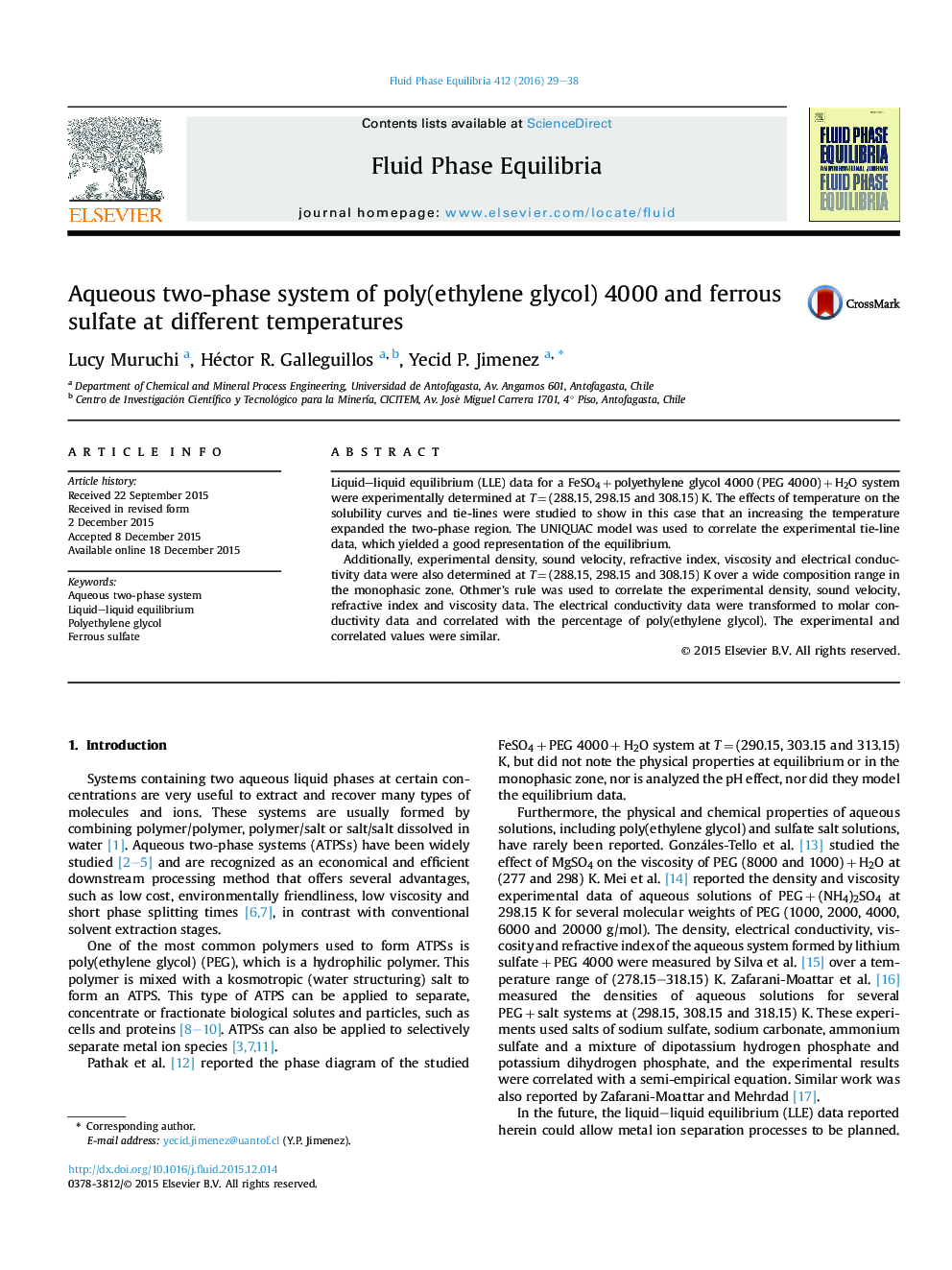| Article ID | Journal | Published Year | Pages | File Type |
|---|---|---|---|---|
| 201255 | Fluid Phase Equilibria | 2016 | 10 Pages |
•The ATPS FeSO4 + polyethylene glycol 4000 (PEG 4000) + H2O was studied at T = (288.15, 298.15 and 308.15) K.•Density, sound velocity, refractive index and viscosity in the biphasic and monophasic regions were measured.•With increasing the temperature, the biphasic zone increases.•The extended UNIQUAC model was used to correlate the experimental tie-line data.•A good agreement between experimental and correlated data was obtained.
Liquid–liquid equilibrium (LLE) data for a FeSO4 + polyethylene glycol 4000 (PEG 4000) + H2O system were experimentally determined at T = (288.15, 298.15 and 308.15) K. The effects of temperature on the solubility curves and tie-lines were studied to show in this case that an increasing the temperature expanded the two-phase region. The UNIQUAC model was used to correlate the experimental tie-line data, which yielded a good representation of the equilibrium.Additionally, experimental density, sound velocity, refractive index, viscosity and electrical conductivity data were also determined at T = (288.15, 298.15 and 308.15) K over a wide composition range in the monophasic zone. Othmer’s rule was used to correlate the experimental density, sound velocity, refractive index and viscosity data. The electrical conductivity data were transformed to molar conductivity data and correlated with the percentage of poly(ethylene glycol). The experimental and correlated values were similar.
